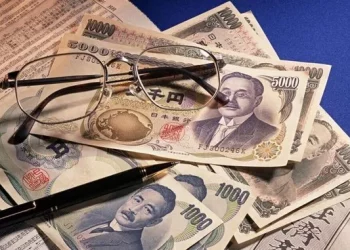The unassuming 1 ruble coin, jingling in pockets and resting in wallets, holds within its metallic form a rich tapestry of Russia’s history, culture, and economic reality. More than just a unit of currency, it serves as a tangible symbol of national identity and a reflection of the country’s evolving economic landscape. This article delves into the multifaceted world of the 1 ruble, exploring its historical journey, intricate design features, and its contemporary economic significance.
A Historical Perspective:
The ruble’s origins can be traced back to the 13th century, with its name deriving from the Russian verb “rubit,” meaning “to chop.” Initially, it referred to silver ingots used as a form of payment. Over the centuries, the ruble evolved, transitioning from a silver-based currency to paper banknotes and eventually to the modern-day coin system. The 1 ruble coin, specifically, has witnessed numerous iterations, reflecting the changing political and economic realities of Russia.
During the Tsarist era, the 1 ruble coin bore the image of the reigning monarch, showcasing the power and authority of the imperial regime. Following the 1917 revolution, the Soviet Union introduced new designs featuring revolutionary symbols and imagery, signifying the ideals of the communist state. After the collapse of the USSR, the modern Russian Federation emerged, and with it came a new 1 ruble coin. This iteration, introduced in 1998, features the emblem of the Bank of Russia – a double-headed eagle – symbolizing the country’s new era and its aspirations for economic stability.
Decoding the Design:
The current 1 ruble coin, minted from steel with a nickel-plated coating, is a small, circular piece with a diameter of 20.5 mm and a weight of 3.25 grams. Its design elements are imbued with symbolism and meaning.
Obverse:
Double-headed eagle: The central motif is the emblem of the Bank of Russia, a double-headed eagle with wings outstretched. This symbol represents strength, power, and unity, reflecting the country’s historical and contemporary aspirations.
See Also:Was 800 Rubles a Lot in 1986?
“Банк России” (Bank of Russia): The inscription above the eagle identifies the issuing authority of the coin.
Year of mintage: Located below the eagle’s talons, the year of mintage indicates the coin’s production date.
Reverse:
“1 РУБЛЬ” (1 Ruble): The denomination of the coin is prominently displayed in the center.
Ornamental floral pattern: A decorative floral pattern surrounds the denomination, adding aesthetic appeal and showcasing traditional Russian artistic motifs.
Economic Significance:
While the 1 ruble coin may seem like a small denomination with limited purchasing power, it plays a crucial role in the Russian economy.
Everyday transactions: It remains an essential part of daily life, used for small purchases, public transportation fares, and everyday transactions.
Price stability: The 1 ruble coin serves as a crucial element in maintaining price stability within the economy. Its widespread circulation helps to control inflation and facilitate smooth commercial interactions.
Symbol of national identity: Beyond its economic function, the 1 ruble coin embodies national pride and identity. Its design elements and historical evolution reflect the country’s cultural heritage and its journey through various political and economic phases.
However, the 1 ruble coin also faces challenges. Inflationary pressures have eroded its purchasing power over time, leading to calls for its withdrawal from circulation. Yet, its cultural and historical significance, coupled with its continued use in everyday transactions, ensures its continued relevance in the Russian economic landscape.
Beyond the Face Value:
The 1 ruble coin, though small in size and value, offers a window into Russia’s complex history, cultural identity, and economic dynamics. It serves as a reminder of the country’s rich past, its evolving present, and its aspirations for a stable and prosperous future. As Russia navigates the complexities of the global economic landscape, the 1 ruble coin remains a steadfast symbol of national identity and a tangible representation of the country’s economic journey.
Related Topics:
Russian Ruble’s Value One Year Ago: A Comprehensive Analysis
What Is the 200 Russian Ruble Note 1993?
Worth of the 1998 5 Rubles Coin in the Forex Trading Arena


























